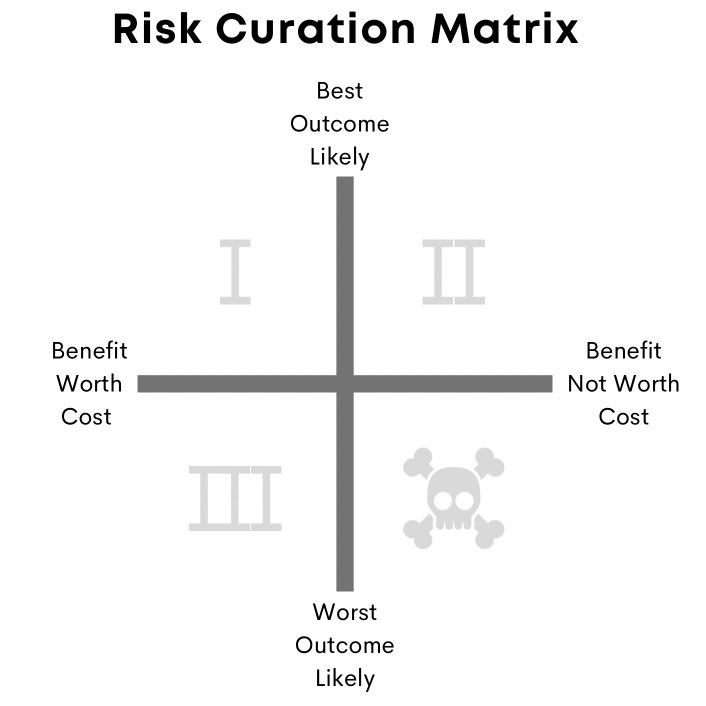A change in the weather is known to be extreme
But what’s the sense of changing horses in midstream?
One of my longtime mantras has been “hope for the best, prepare for the worst, and expect something in between.” That philosophy has stood me in good stead as the extremes — absolute good or absolute bad — occur only rarely and are usually nowhere as good or bad as we imagine.
As obvious as this approach may seem, it is all too easy and even natural to assume the best or the worst of any situation while overlooking the most likely scenario. When we approach a choice, we establish a continuum between devil-may-care fatuousness and doomsday preparation. On one side frolics the happy-go-lucky grasshopper driven by FOMO, roaring, “YOLO!,” and exalting in a seemingly eternal summer. On the other side toils the frenzied ant shrieking, “OMG!,” and slogging indefatigably all through the beautiful season, fixated only on the coming winter.
There are leaders who innately identify with the grasshopper, perhaps wary of crying wolf (to mix my fables) or of spreading malaise among the masses. In some cases, this tendency manifests as an aversion to appearing risk adverse. Many more leaders, though, innately identify with the ant, perhaps wary of being unprepared for some future crisis. In some cases, this tendency manifests as an aversion to appearing reckless.
We can see these inclinations at work in the reaction to Covid 19. Some otherwise rational grasshoppers imagine that the potential harm of the disease is slight and even exaggerated. Some otherwise healthy ants, in the meantime, see death and disease everywhere, refusing to relax a bit even after vaccination.
At either extreme, the fear is of making a mistake, of overreacting to a phantom danger or of failing to anticipate an impending doom. And both are almost always wrong. We can confidently expect something in between.
Frankly, no matter what choice you make, mistakes will occur, both avoidable and unavoidable. In fact, the very choice between trying or not trying something can itself be an error. I have always been fond of the aphorism that anyone who has never made a mistake has never attempted anything, but I must note that it is a bit misleading. Very often not attempting anything at all is itself the very worse mistake, and here lies another important truth about decision making: trying is almost always better than inertia.1
So much of decision making is about curating risk. In my experience, most formulas for making decisions and assessing risks are so vague as to be meaningless or so specific and complex as to be useless. For typical everyday assessments of risk, a simple cost-benefit analysis combined with an estimate of probability is all that is needed. Is the good of a particular choice worth the cost? What is the most likely scenario if you take a risk? Certainly consider the best case and the worst case outcomes, but what is the most likely? Something in between.
Below is what I pretentiously call the “Risk Curation Matrix,” but really it is just a simple quadrant tool for decision making.
When available, trust the data to make decisions regarding risk. When reliable data is unavailable, seek it out. Data can eliminate both bias and noise in decision making. But don’t overdo it. Data is but a tool and only one tool at that. Be sure to weigh data against other sources of information and wisdom, including experience.
As appealing as the extremes on our continuum may be — to party with the antic grasshopper on one side or to prepare with the no-nonsense ant on the other — it is best to expect something in the middle since that is where almost all consequences fall. If it helps we can assign the middle position its own insect, such as a tick or a dung beetle. Pick your favorite creepy-crawly, and proudly declare, “I expect something in between. I am a moth!”
Think about the last time you really longed for some positive in your life — an event or an outcome. Even if you were lucky enough to get what you wanted, was it really all you had dreamed? Kids offer a great object lesson here. Kids obsess over the prospect of receiving a toy for a holiday or birthday. How long does that preoccupation last, though, once they have the object in hand? A week? A day? How long before they abandon it to go play with the box it came in? Sure, hope for the best, but don’t expect it to be all that. Ants may be a drag at a picnic, but they don’t waste time with idle longing.
Now think about the last time you were really worried about something. Did it come to pass as you feared? Chances are, even if it was bad, it did not conform to the worst-case scenario you had conjured. Sure, prepare for the worst, but don’t obsess over it to the detriment of the present. Worry does nothing to protect us from future harm, but it is guaranteed to ruin the here and now. Grasshoppers may be a slovenly class, but at least they have fun.
We all constantly assess risk, weighing this against that, and we must make our choices, including the choice not to choose. A realistic approach — one that shoots for the best-case scenario, accounts for the worst, but settles on something in between — will alleviate pointless anxiety while mitigating avoidable harm. Otherwise, if you choose to behave like either the grasshopper or the ant, life may just squish you like a bug.
I welcome your comments and questions. Please click on the button below or, if you prefer, email me at
Email Jim:
Atul Gawande wisely argues, “The difference between triumph and defeat, you’ll find, isn’t about willingness to take risks. It’s about mastery of rescue.” Sahil Bloom adds to this wisdom, “Failures are a given. The greatest don't fail less, they just succeed in rescuing more.”
,














